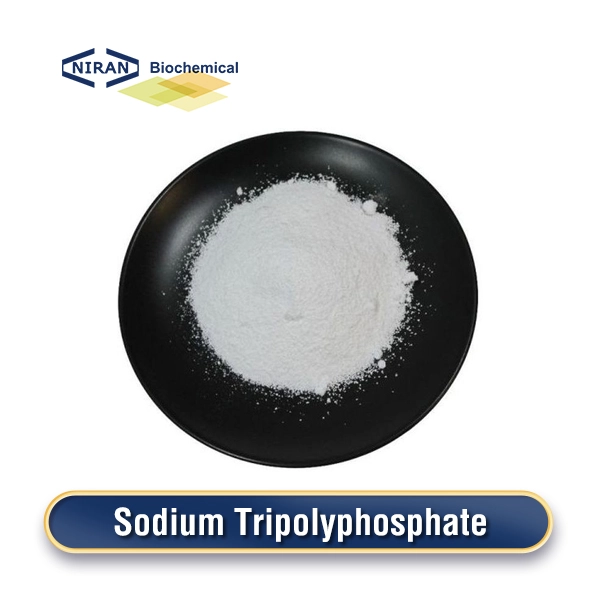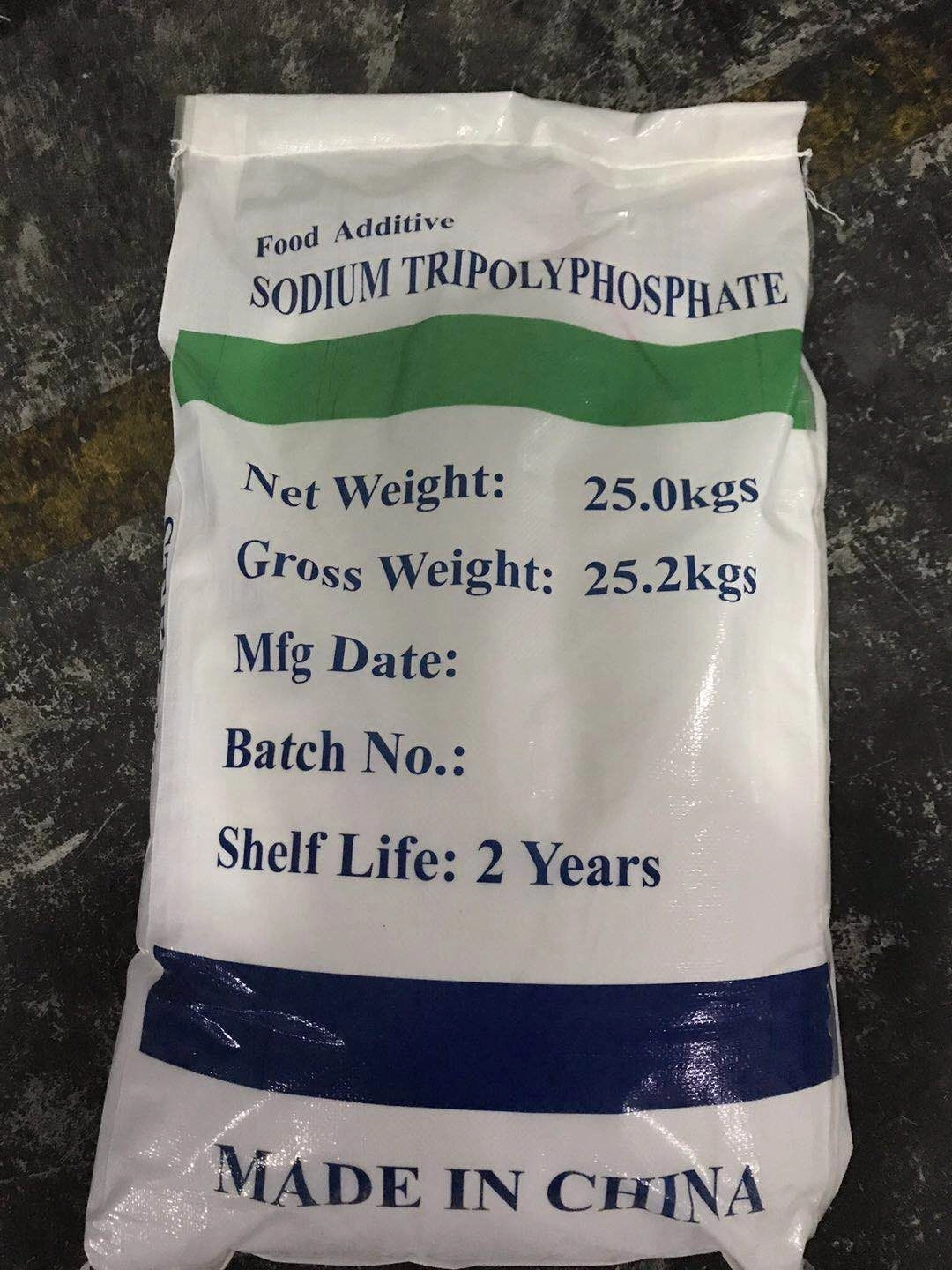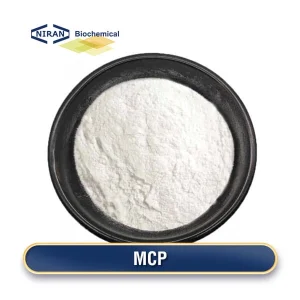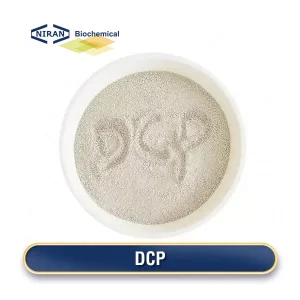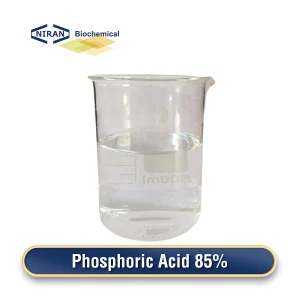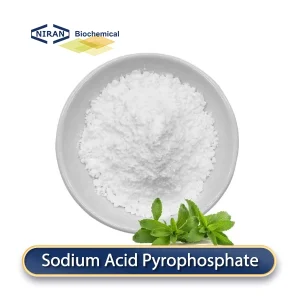Niran Biochemical
YOUR RELIABLE FOOD INGREDIENTS
Send Inquiry
Home » Products » Phosphates » Sodium Tripolyphosphate
Sodium Tripolyphosphate
- CAS: 7758-29-4
- Chemical Formula: Na5P3O10
- Certification: KOSHER, ISO, HALAL, FSSC22000, BRC, etc.
- Standard:
- MOQ: 1000KG
- Shelf Life: 2 Years
Inquire Product
Product Description
Sodium Tripolyphosphate Production Methods
There are three main production processes for sodium tripolyphosphate:
1. Wet production is one of the main production processes of sodium tripolyphosphate. Its basic process includes the neutralization reaction of phosphoric acid and alkali solution, the formation, precipitation and drying of tripolyphosphate. The main advantages of this process are high yield and stable quality, but the process is relatively cumbersome and requires a lot of water and energy.
2. Dry production is one of the simpler sodium tripolyphosphate production processes. It uses phosphoric acid and alkali metal salts (such as sodium carbonate, etc.) to dry and dehydrate at 400-500℃ to obtain sodium tripolyphosphate. The advantages of this process are low water consumption and simple process, but it requires high temperature reaction and the output is not as good as wet production.
3. The soda ash production process is a neutralization reaction between sodium carbonate and phosphoric acid solution. Sodium subphosphate is first generated, and then sodium triphosphate is precipitated under the action of sodium carbonate. After filtering, washing and drying, sodium tripolyphosphate is obtained. The advantages of this process are low temperature, simple operation and easy availability of raw materials, but it requires sodium carbonate of higher purity and relatively high cost.
Related parameters:
| ITEMS | UNITS | SPECIFICATIONS |
| Assay | % | Min. 94 |
| P2O5 | % | 56~58 |
| pH (1% Solution) | 9.2~10.0 | |
| Water Insoluble | % | Max. 0.5 |
| As | mg/kg | Max. 3 |
| Heavy Metal | mg/kg | Max. 10 |
| Pb | mg/kg | Max. 2 |
| F | mg/kg | Max. 20 |
| Whiteness | % | Min. 90 |
| Bulk Density | g/cm3 | 0.5~0.7 |
| Turbidity | NTU | Max. 30 |
| Loss on drying | % |
Recommended dosage
| Food Name | Maximum usage(g/kg) |
| Ham | 4 g/kg |
| Sausage | 5 g/kg |
| Luncheon meat | 5 g/kg |
| Bacon | 4 g/kg |
| Cured meat | 4 g/kg |
| Chicken products | 5 g/kg |
| Surimi products | 5 g/kg |
| Frozen seafood | 4 g/kg |
| Soy products | 3 g/kg |
| Canned food | 3 g/kg |
| Canned fruit | 3 g/kg |
| Cheese | 4 g/kg |
| Cream | 3 g/kg |
| Condensed milk | 3 g/kg |
| Dairy products | 3 g/kg |
| Sauce | 3 g/kg |
Sodium Tripolyphosphate has a wide range of uses
1. Quality Improver
Sodium tripolyphosphate is a common food additive, mainly used as a quality improver. It can improve the gel properties of meat, enhance the cutting force, elasticity and buoyancy of meat, thereby optimizing the taste and appearance of meat.
In addition, it also has the function of increasing taste, acting as a moisture retainer and thickener. In food, sodium tripolyphosphate is not only used for preservation and pH adjustment, but also interacts with protein to provide nutritional supplements.
2. Water retainer, softener, tenderizer
Sodium tripolyphosphate is mainly used as a water retainer, softener and tenderizer in food. As a water retainer, sodium tripolyphosphate can form a complex with myosin in meat, thereby improving the water binding capacity of meat, preventing water loss, and thus improving the beauty and freshness of meat.
In addition, it also has a softening effect and can improve the taste of food.
At the same time, sodium tripolyphosphate is also a tenderizer that can make foods such as meat more tender and smooth.
3. Thickener
As a thickener, sodium tripolyphosphate can change the rheological properties of food, making it thicker and richer.
4. Improve the edible quality of food processing
In meat and fish products, sodium tripolyphosphate can be used to increase the tenderness of meat, improve color, and help prevent fat oxidation, thereby extending the shelf life of the product.
User asked question:
Q: Why should sodium tripolyphosphate be added to meat products?
A: 1. Enhance the oil-water separation ability of meat: During the processing of meat products, sodium tripolyphosphate interacts with the water and protein in the meat to form a colloidal sol, which can effectively enhance the oil-water separation ability of meat and prevent excessive water discharge during heating or storage of meat products.
2. Improve taste and taste stability: Since sodium tripolyphosphate can enhance the oil-water separation ability of meat, its use in meat products can improve the taste and taste stability of meat and improve the taste quality of meat products.
3. Increase the water retention and freshness of food: Sodium tripolyphosphate can increase the water content in food, thereby increasing the water retention and freshness of food, effectively extending the storage period of meat products and reducing the risk of food spoilage.
Q: What is the market situation of food-grade Sodium Tripolyphosphate? Is the price fluctuating greatly?
A: Domestic Market (China)
In China, the price trend for STPP is relatively stable but shows slight fluctuations. The demand remains consistent, driven primarily by the food processing and detergent industries. However, due to the economic recovery from the pandemic, there has been a slight decrease in production costs, contributing to stable prices.
International Market
Asia-Pacific:
The Asia-Pacific region, particularly China, has seen a decline in STPP prices due to weak demand from industries like water treatment, detergents, and food and beverages. The market is characterized by high supply and low demand, causing a bearish trend.
Europe:
In Europe, the market experienced varied pricing trends in the latter part of 2023, with initial declines followed by slight increases. Factors such as economic downturns and the aftermath of geopolitical tensions like the Russian war have influenced the market, leading to fluctuations. Overall, the market saw a decline in prices due to subdued consumer demand and high inventories.
North America:
North America also witnessed a decline in STPP prices towards the end of 2023, influenced by weak demand from downstream industries and low-priced imports. Business confidence was low, and despite a slight rise in manufacturing PMI, the overall market activity remained unchanged.
Price Volatility:
Overall, the price volatility for food-grade STPP is moderate. While there are fluctuations due to varying demand and economic conditions in different regions, the market is expected to grow at a compound annual growth rate (CAGR) of 4.73% from 2024 to 2030, reaching USD 7.37 billion by 2030.

